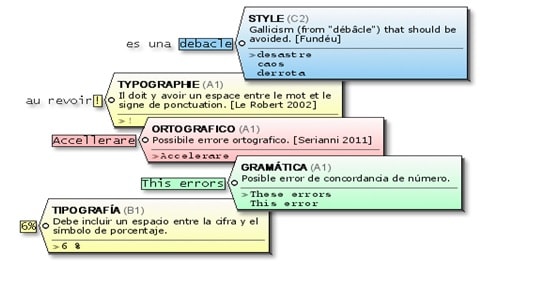
About the review process and the reviewer’s role

By Cristina Ponte, Quality Controller at Nóvalo
The European quality standard for translation services UNE EN-15038:2006 specifies that « quality is guaranteed not by the translation which is just one phase in the process, but by the fact of the translation being reviewed by a person other than the translator » and that, therefore, « any translation service under EN-15038 must include as a minimum, translation and review ».
In my opinion, a text is not translated until the translation has been reviewed. However, along my career as a translator, I have received some review reports including changes that I absolutely did not agree with, or that weren’t at all relevant. I have had the feeling sometimes that there are reviewers that introduce changes and corrections just for invoicing purposes, I mean, to show that they have indeed done their job and reviewed the text…Well, let me tell you, my dear reviewers, that there is no need to do that; if a translation is correct, why should it be modified? Although we might « have expressed the same idea with other words », if there are no mistakes in the translation, there is no need to ammend the translator’s work. There are many different ways of expressing one single idea, so we shouldn’t yield to the temptation of rewriting the text. The review process must be fair and for this purpose, objectivity must be guaranteed. Basing the review on objective metrics is essential and the reviewer should be able to support each single change with valid arguments, strong enough as to not being confused with mere preferences.
Within a company, setting clearly the metrics that will be used during the review process can be very helpful, but also assigning a category (accuracy, consistency, terminology, grammar, punctuation, etc.) to each metric and defining each error « severity » level. Determine the required minimum quality level under which a translation is considered unacceptable becomes also very important. Probably all of you will have to review a text at some stage, so the use of the same criteria is therefore essential.
But there are also other difficulties linked to the review task, apart from the linguistic issues themselves. Quite often, the task can be constrained by a budget or a deadline. In such cases, it is very important to know how to determine the review thoroughness level and stick to it all the time; and that is not always an easy task.
The European Commission Revision Manual is a document of the Directorate-General for Translation specific for this service. However, we can use for our own work many of the information it contains.
According to this manual, the aims of the review are threefold: to improve translation quality, to serve as an instrument for quality control and to provide professional training for translators and reviewers alike.
The first aim is clear: the main role of the reviewer is to detect and correct possible errors improving, by doing so, the final quality of the translated text. Regarding the fact that it can serve as an instrument for quality control, a periodic or systematic review and assessment of a resource will with no doubt contribute to determine the quality of the assessed resource. Lastly, the review process can be very enriching, both for the translator and for the reviewer himself: the translator receives feedback about mistakes actually made and that presumably will not happen again in the future; the reviewer will probably learn from the difficulties and questions arising from the original text and its translation.
I would like to refer once again to the European Commission Revision Manual in order to list the theoretical principles that reviewers must observe. The adoption of these principles by the reviewer will not only contribute to make the whole review process easier, but the final result obtained will be improved as well.
- Assume from the outset that the translation to be revised is of good quality.
- Revision effort should be in proportion to the importance of the text.
- Clearly inadequate translation should be given straight back to the translator.
- Do not rewrite a translation.
- Do not present your personal preferences as gospel.
- Make changes whenever you can understand the translation only by reading the original.
- The fewer changes, the better.
- Back up any changes that are not self-explanatory with references to concrete documentary sources.
- Make sure that the changes you make are relevant.
- Point out borderline cases.
- Dialogue with the translator is of capital importance.
- Always see revision as a training opportunity for revisers and translators alike.
And this is it for this brief introduction to the reviwer’s role and the review task as part of the whole translation process. In future articles we will discuss in detail some of the subjects that we succinctly described here.







Sin respuestas a "About the review process and the reviewer’s role"